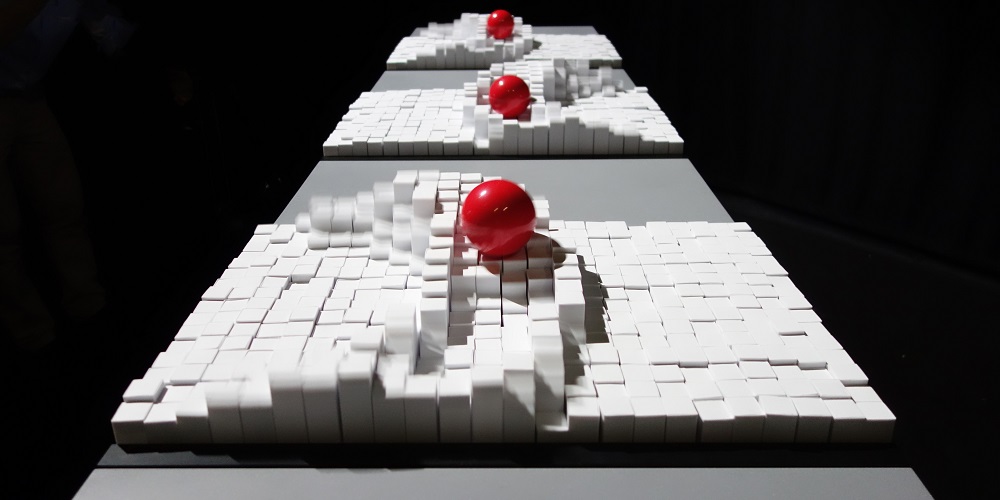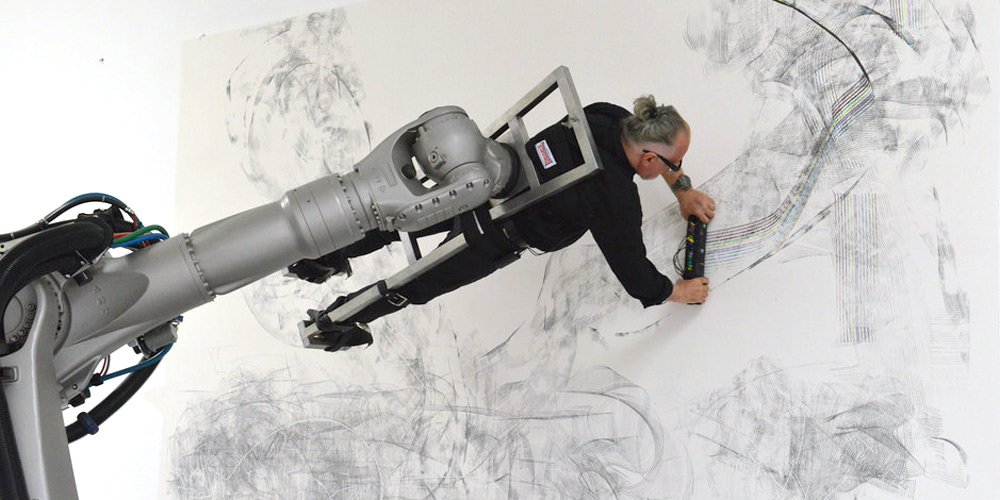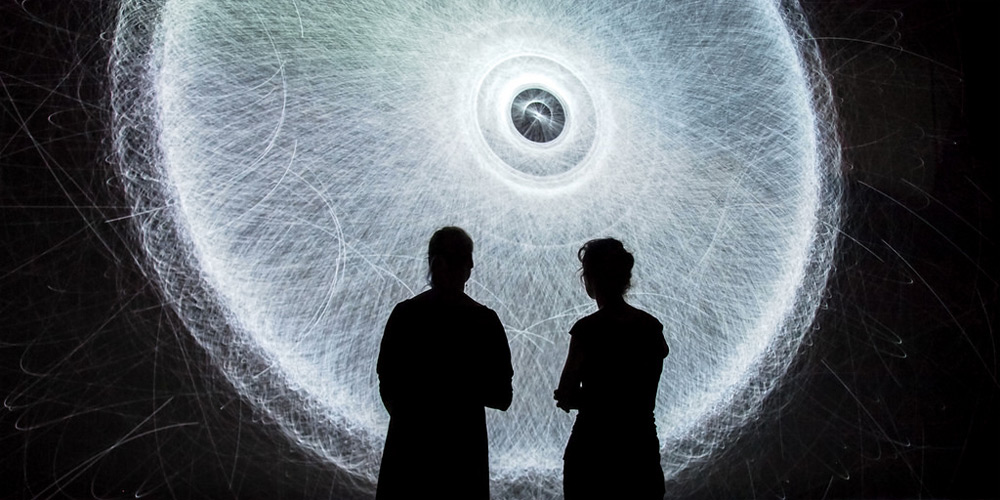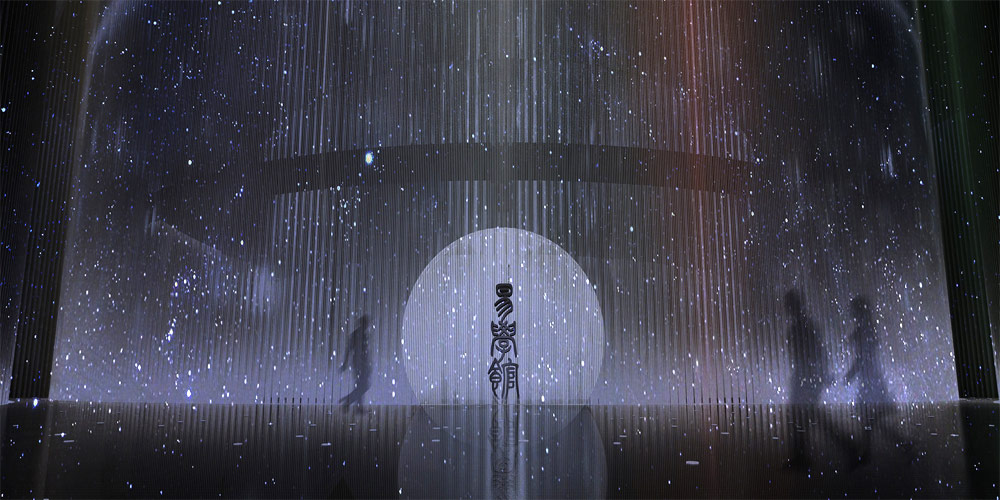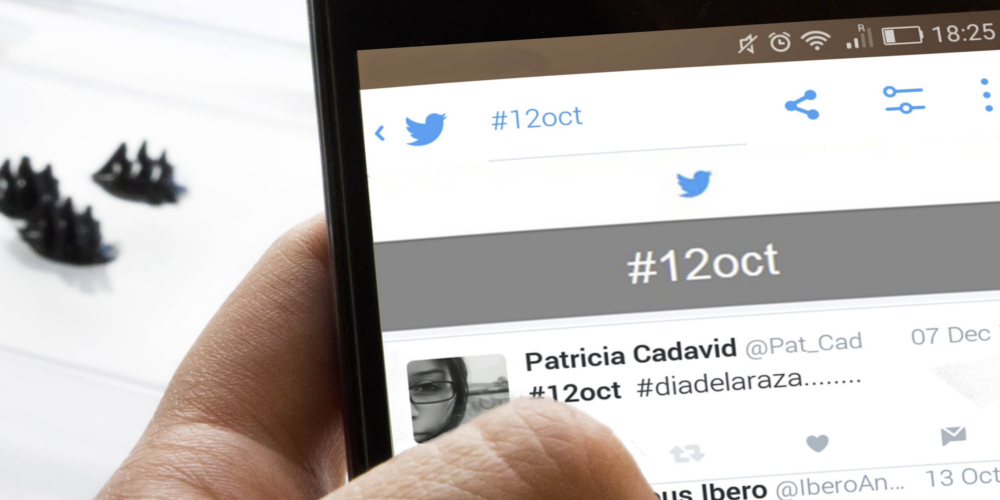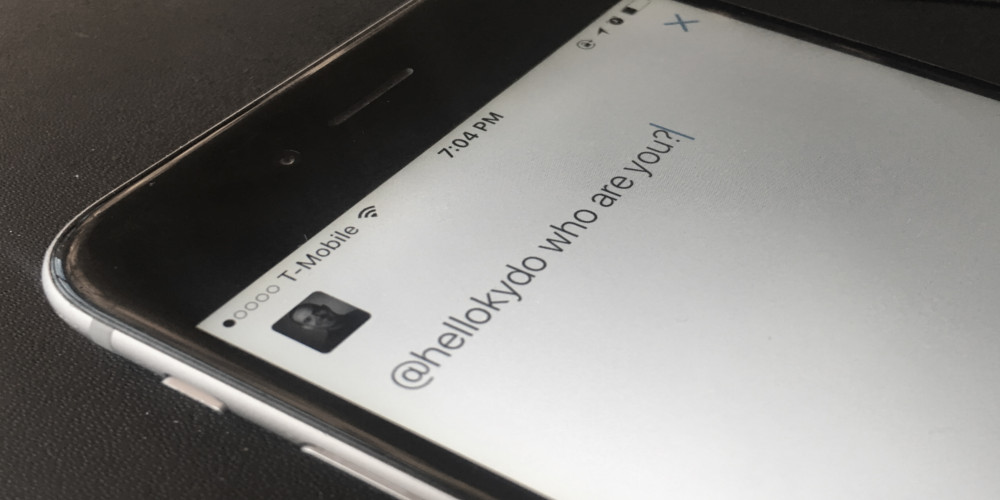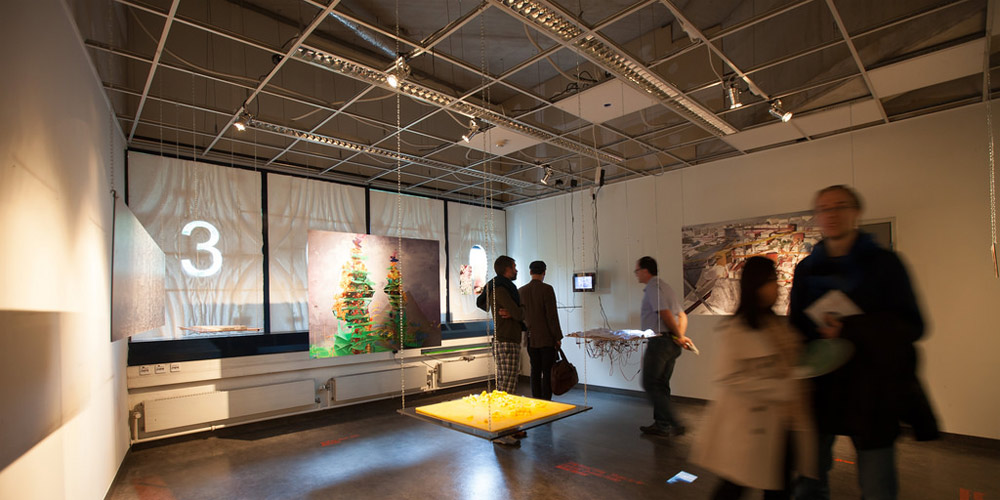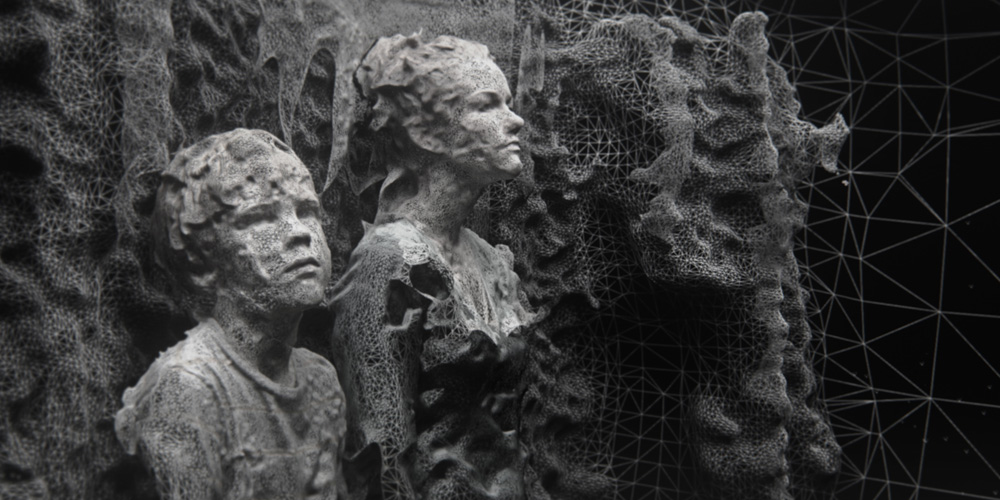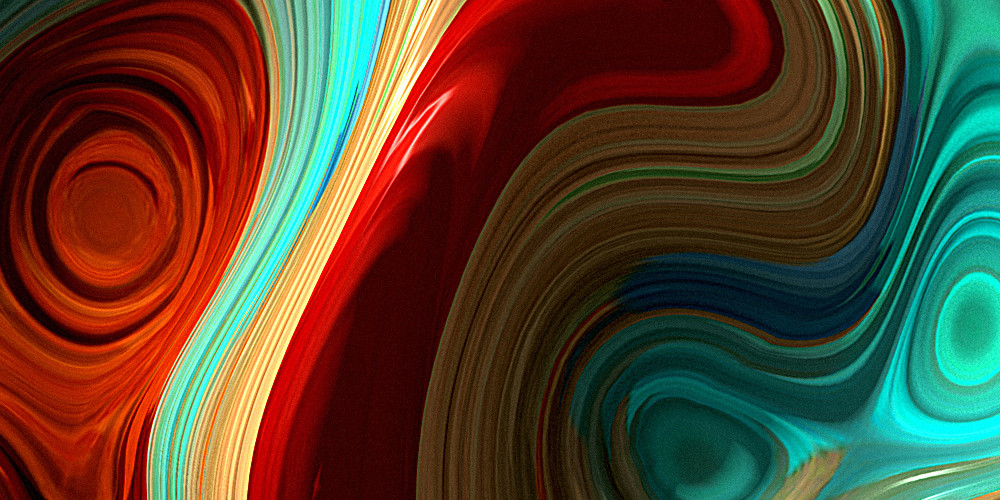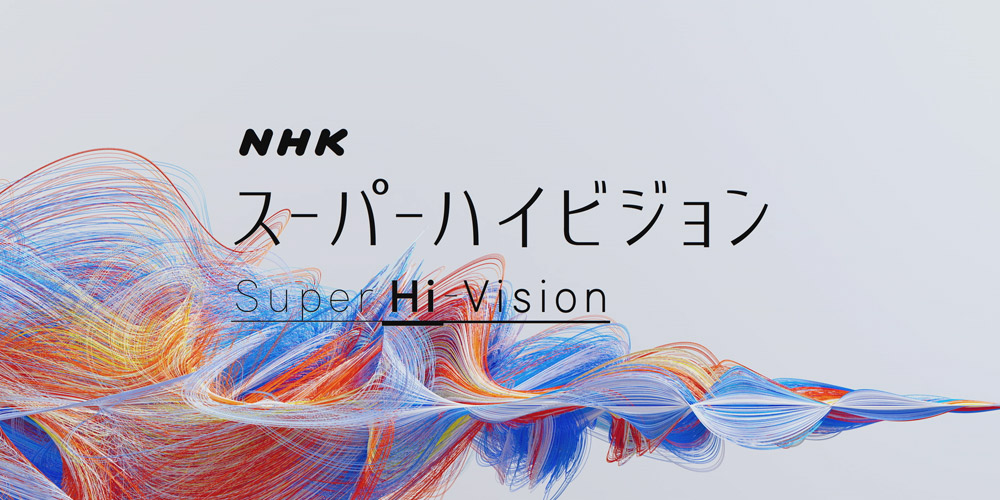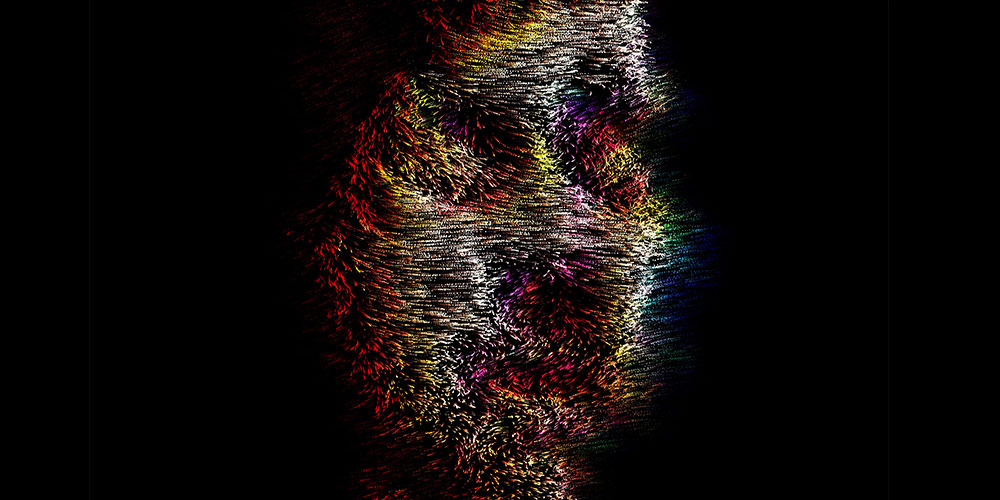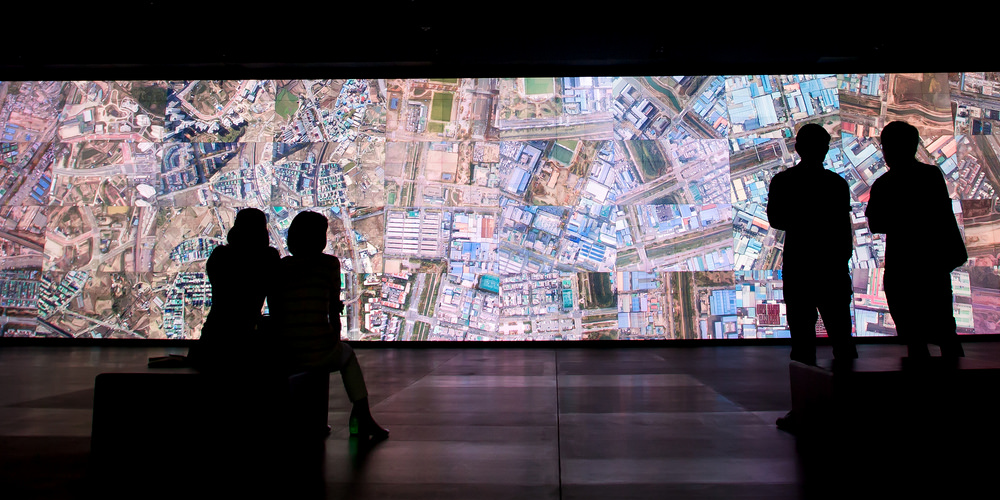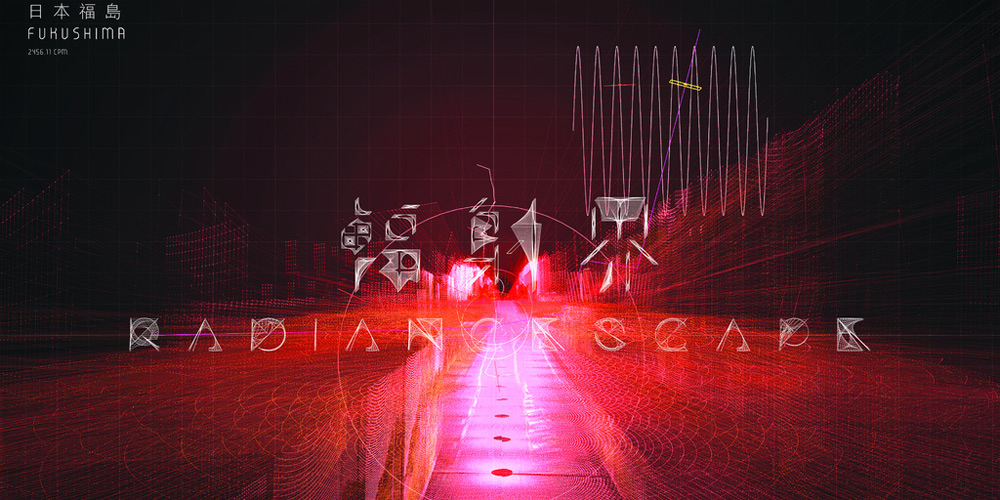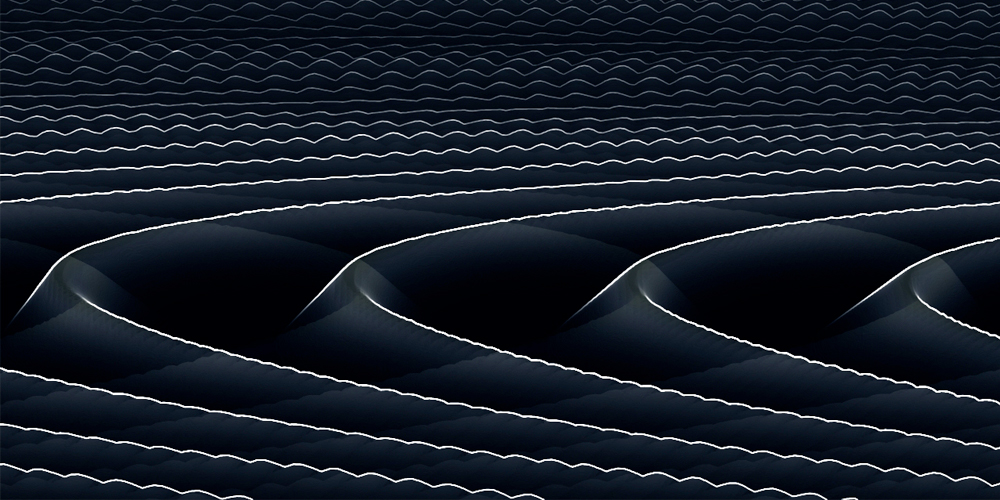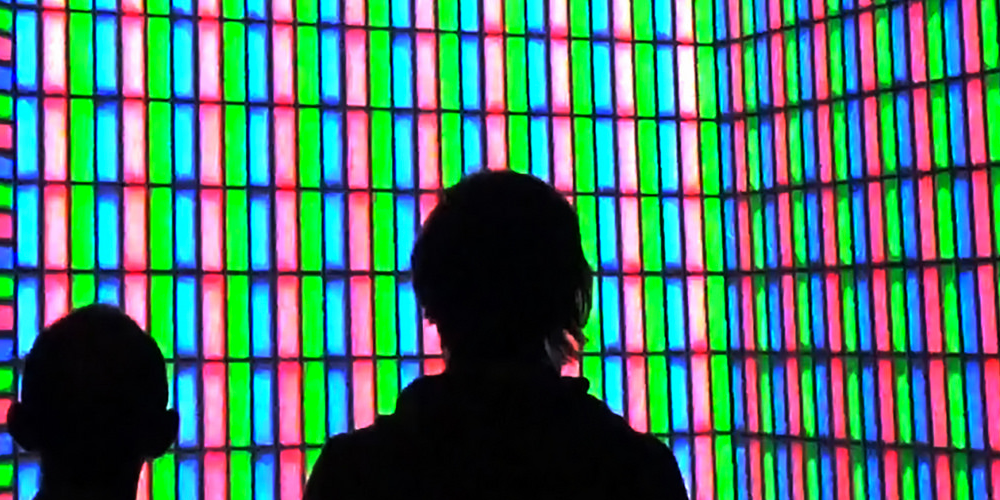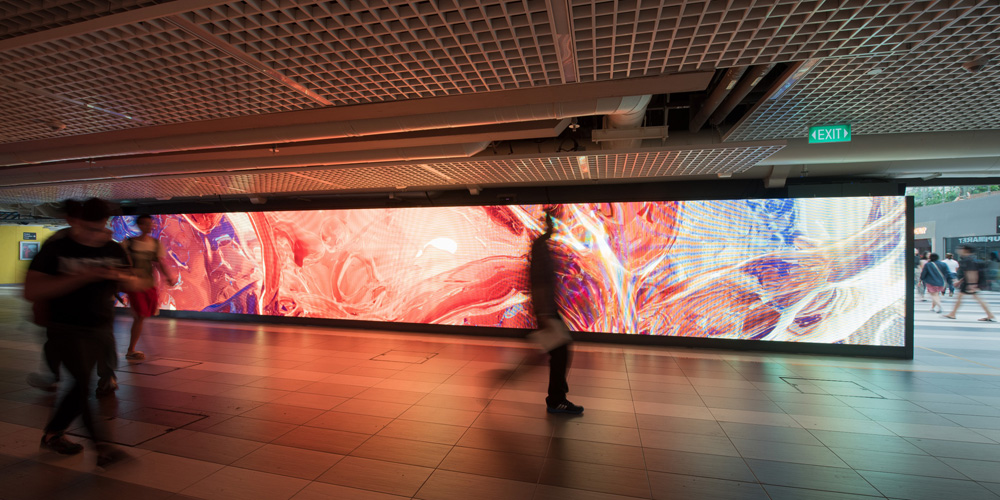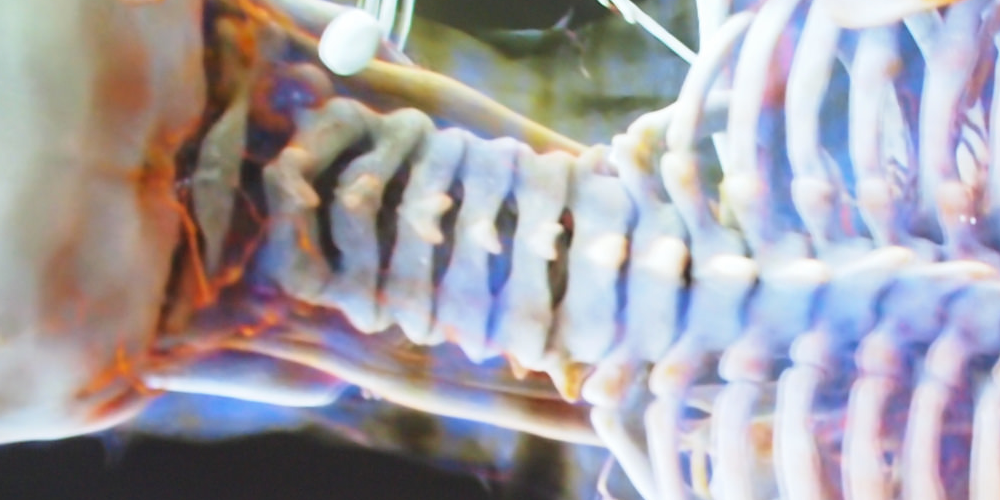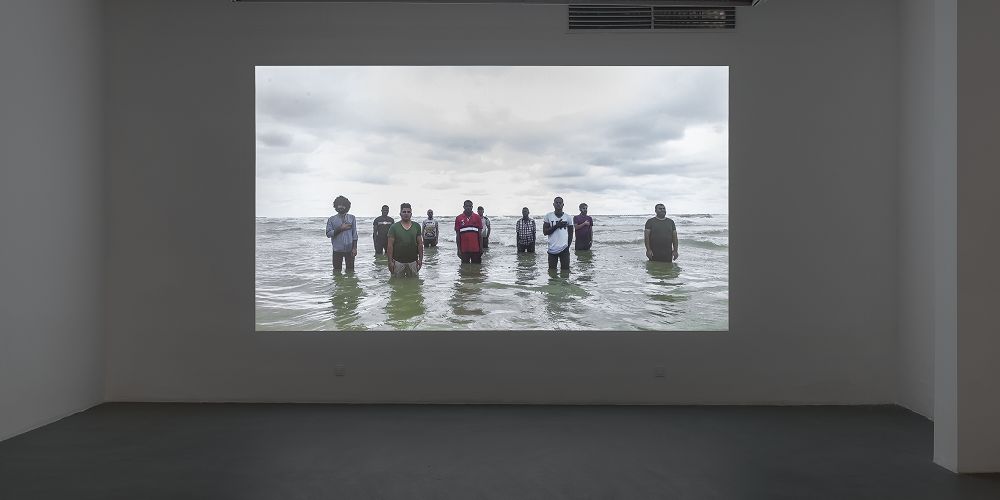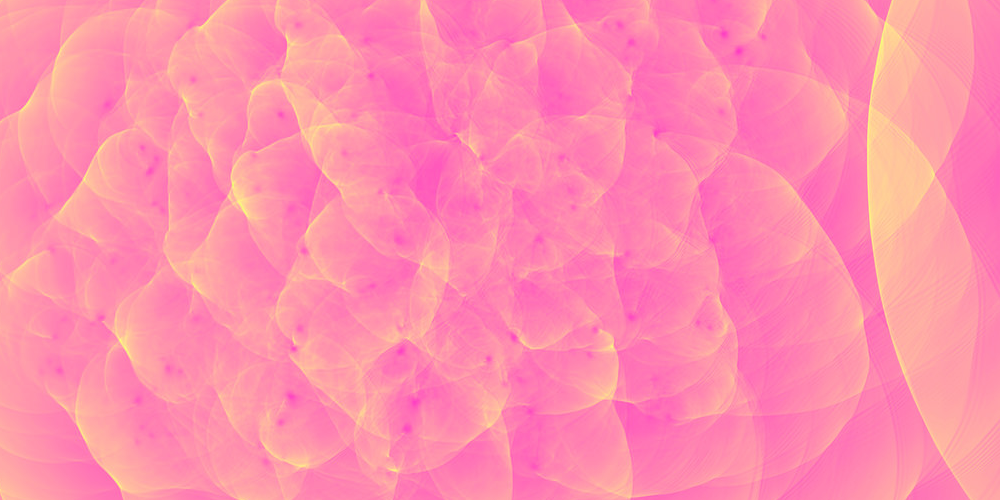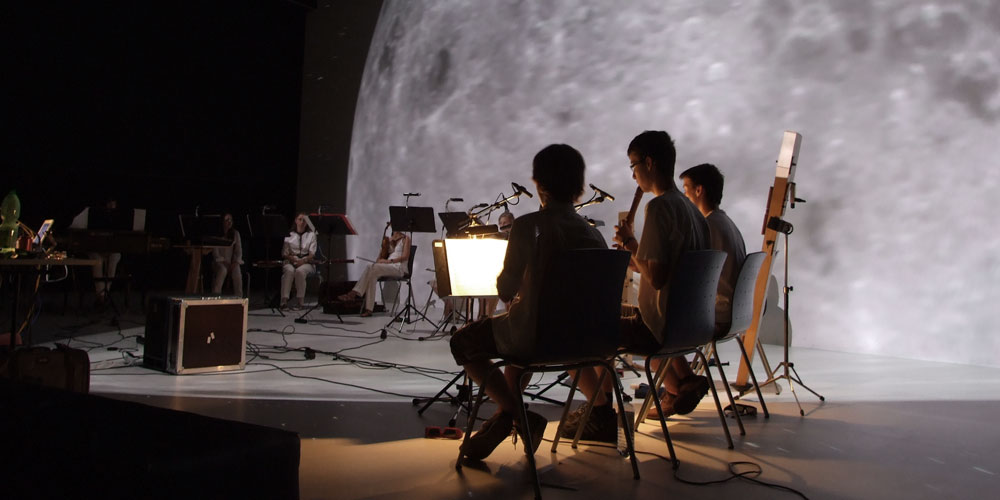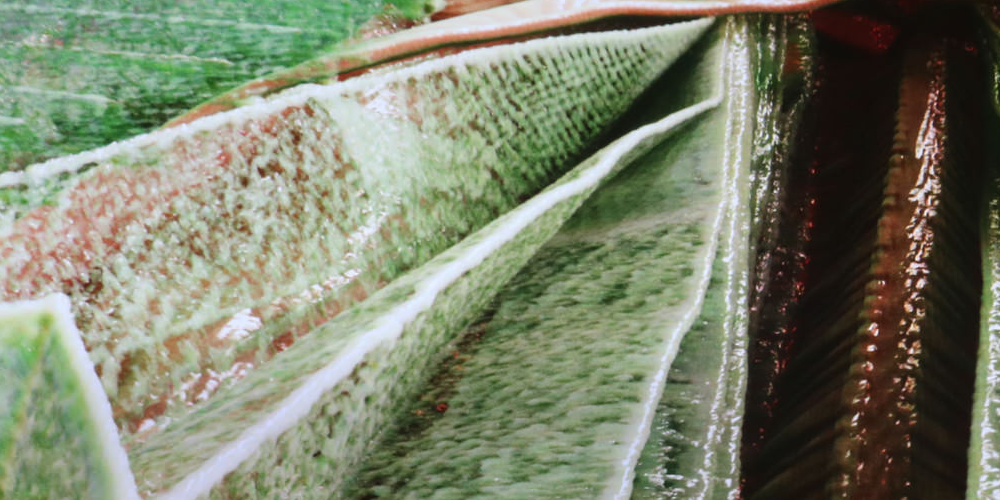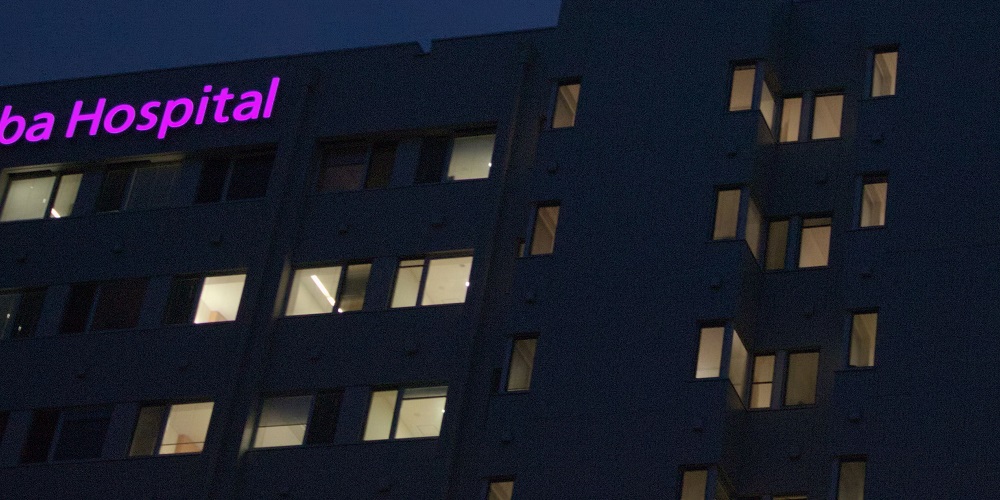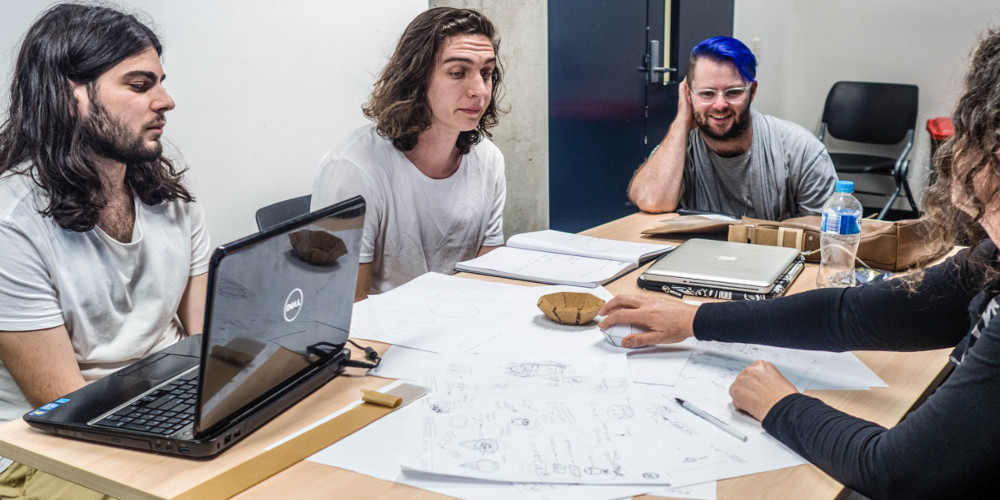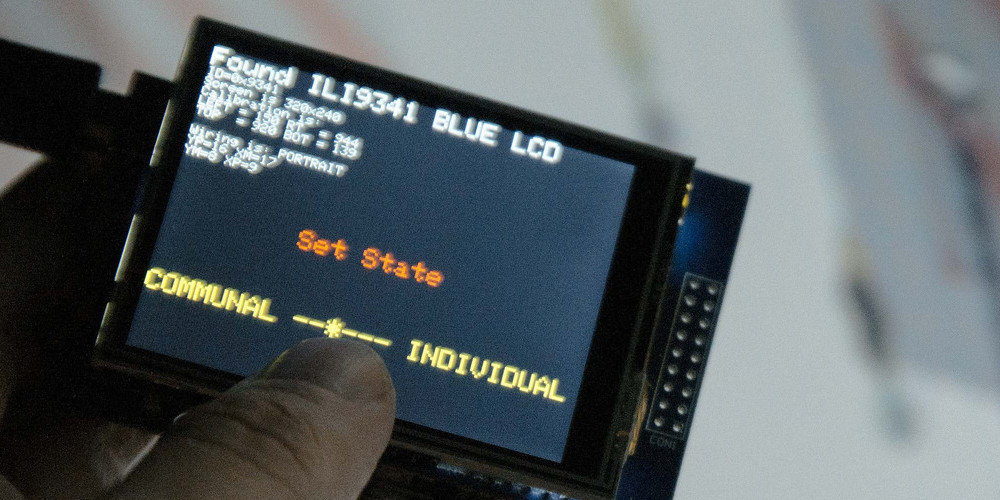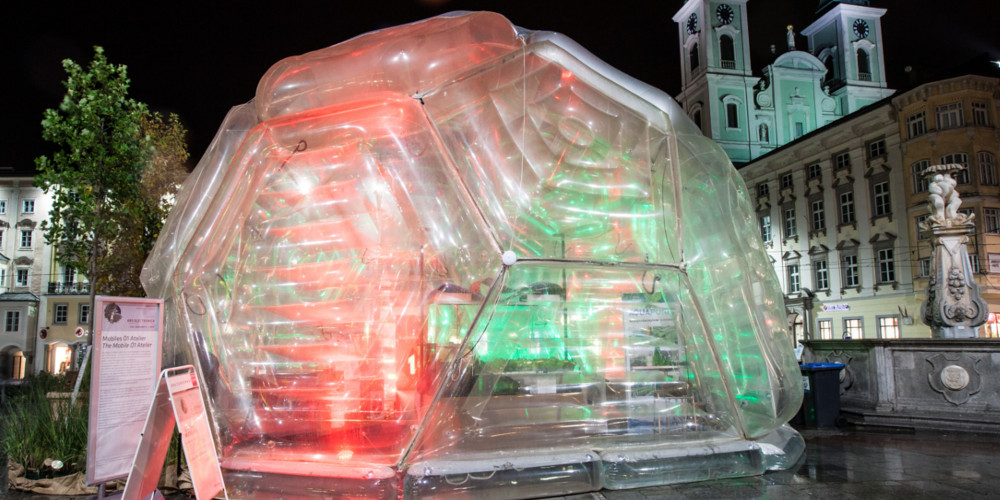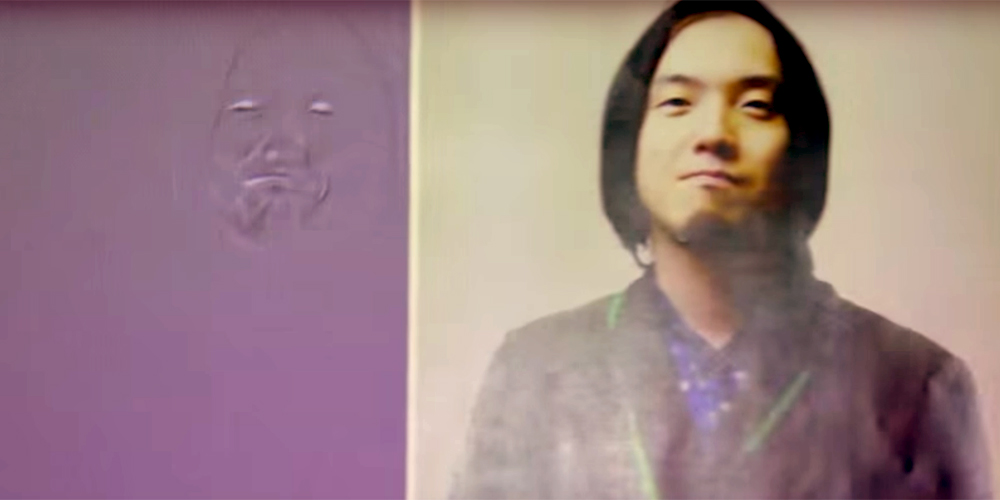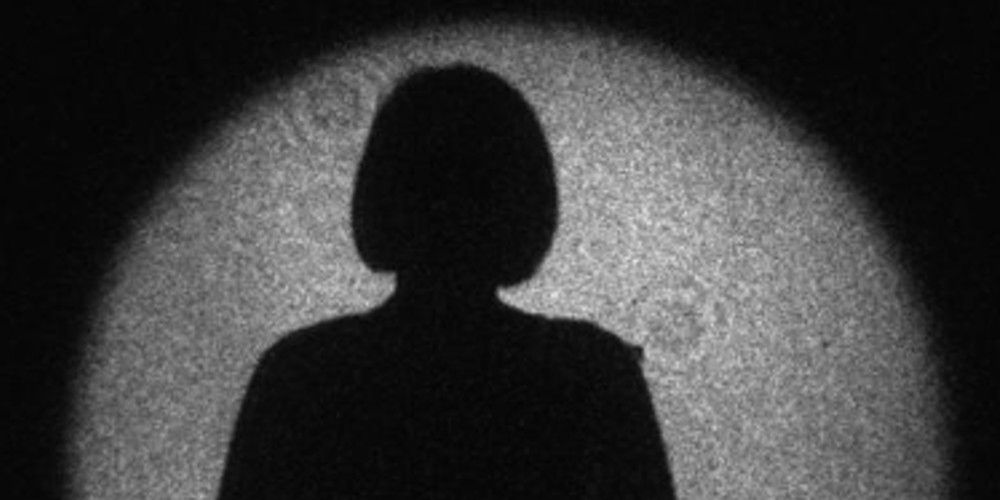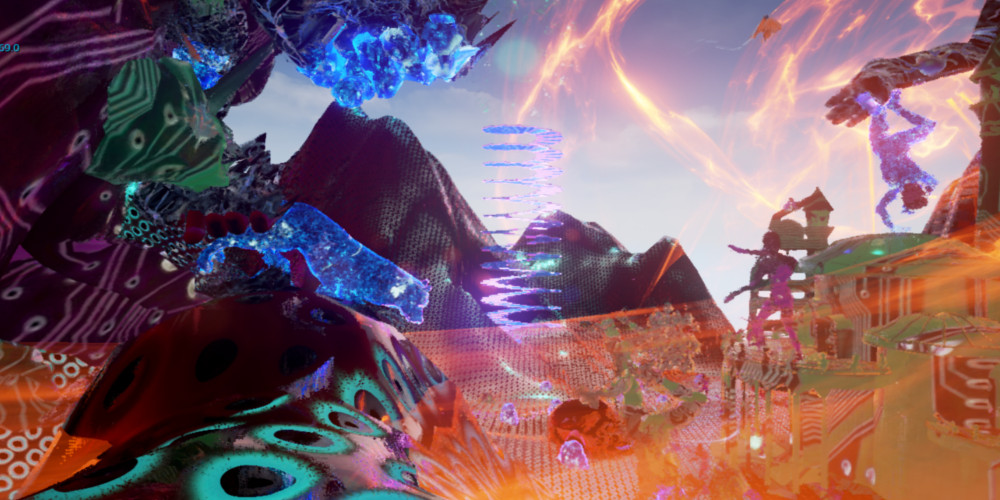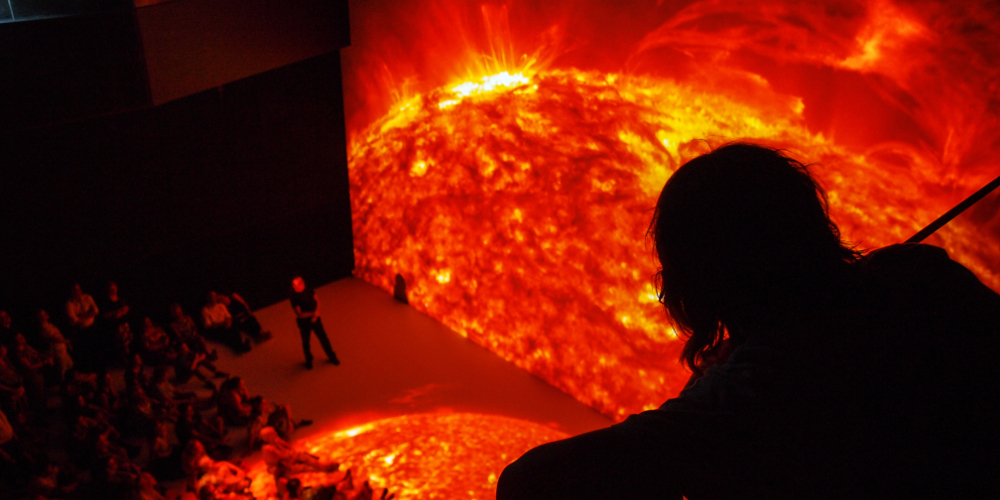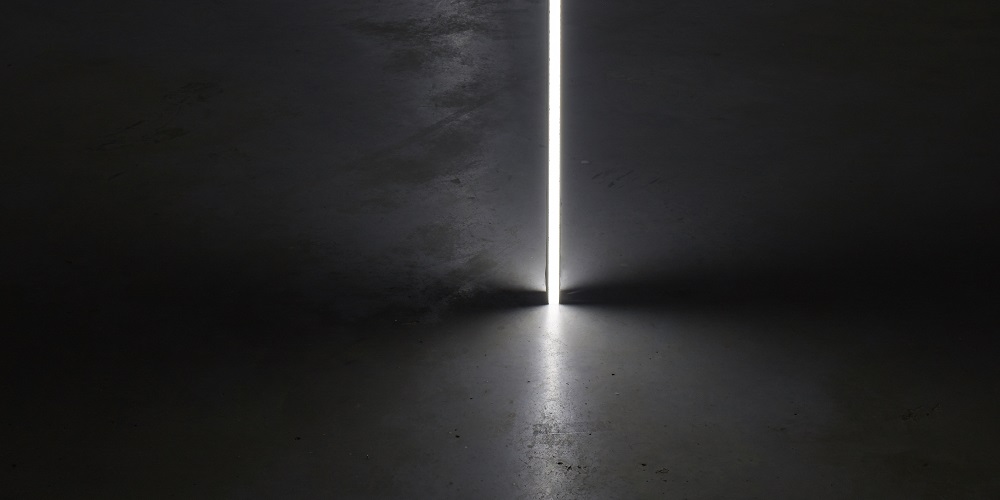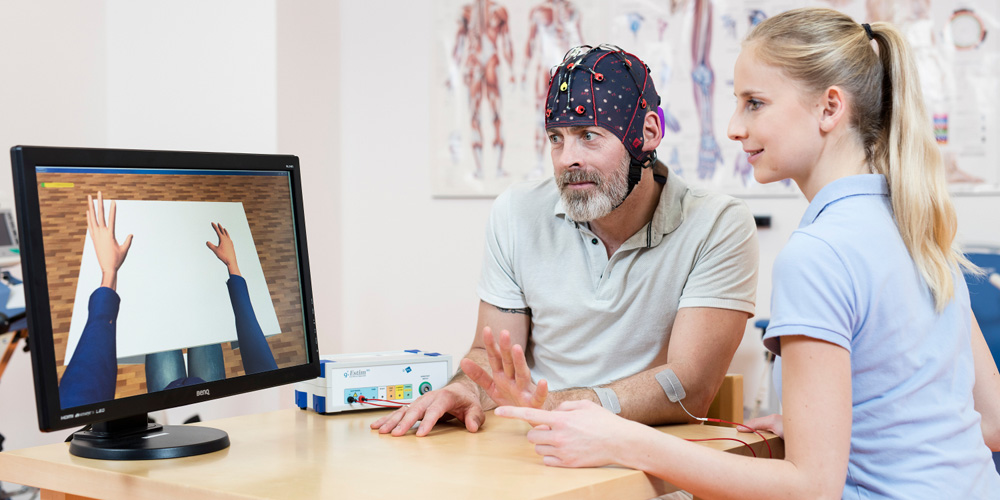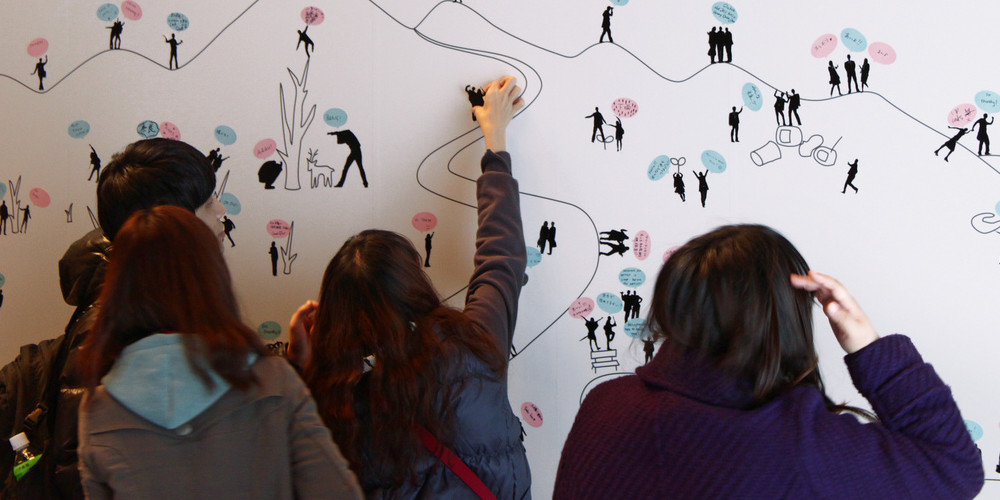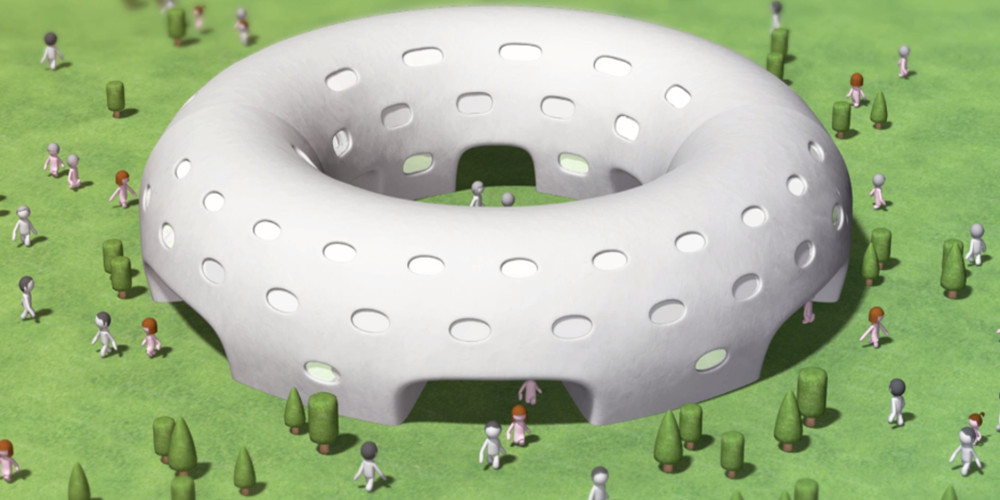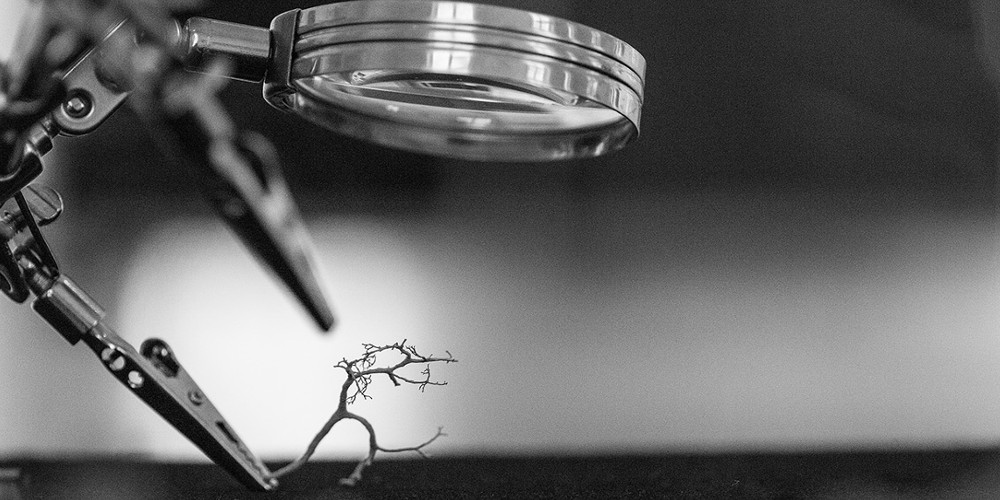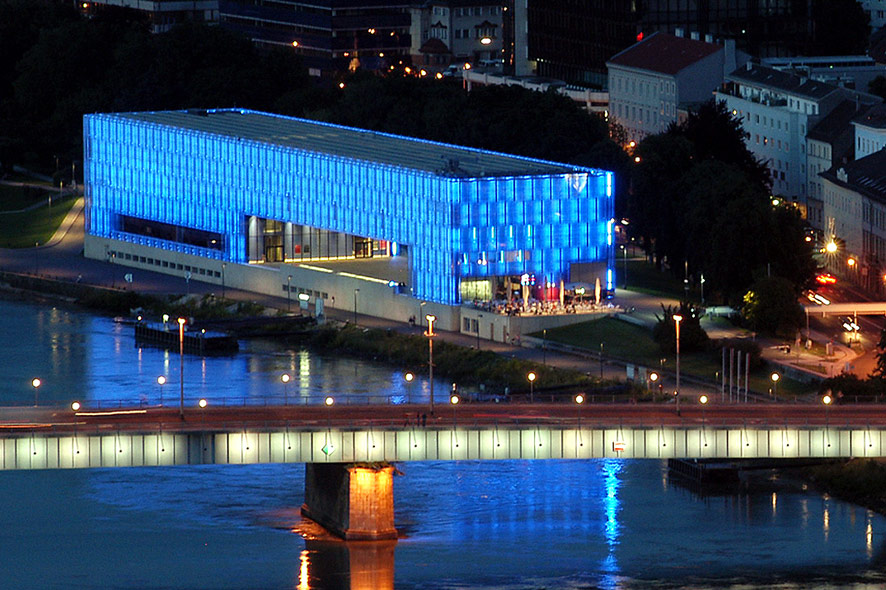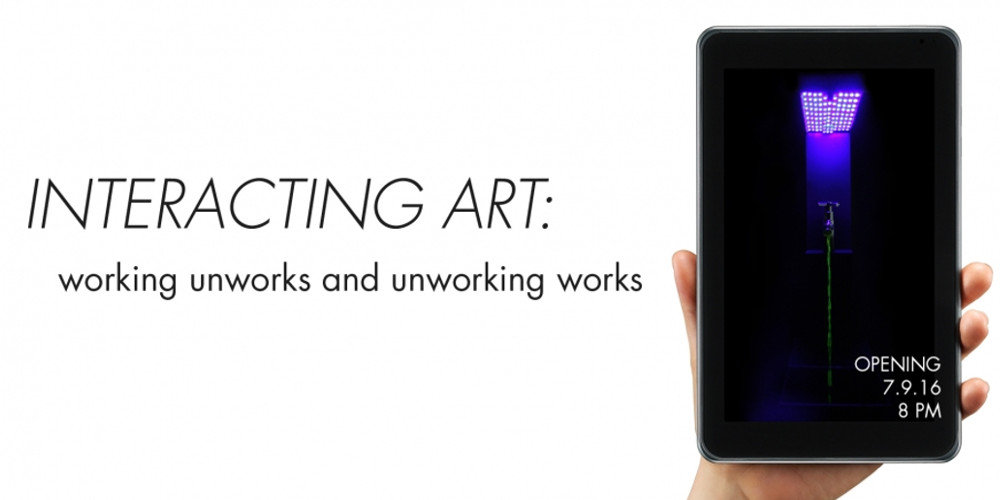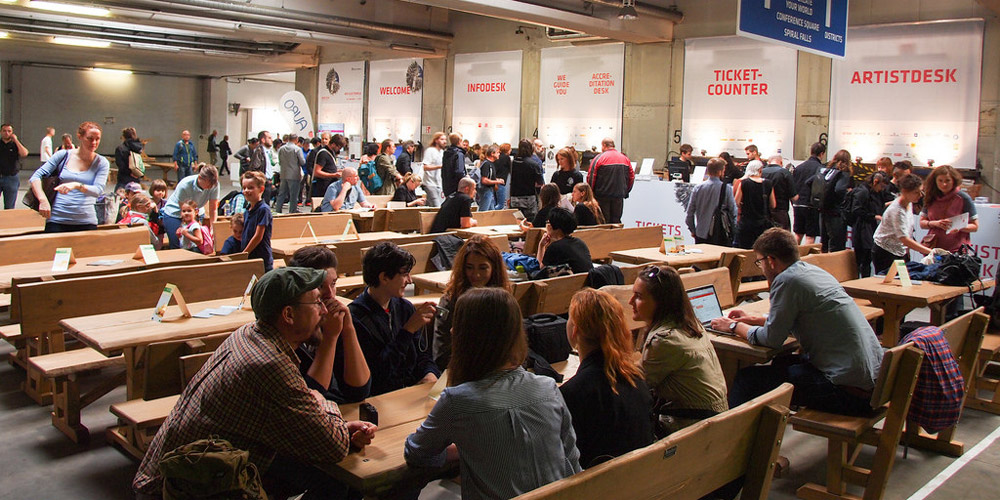Exhibitions, Projects
The finest in media art. The most important exhibition at every festival is the CyberArts show at the OK Center for Contemporary Art featuring works submitted from all over the world for Prix Ars Electronica prize consideration and singled out for recognition by this year’s juries. This is a comprehensive showcase of excellence and leading indicator of what’s happening in digital art. The theme exhibition at POSTCITY brings together a wide array of artistic approaches designed to open up diverse perspectives from which to consider this year’s festival theme. The Ars Electronica Center (with extended opening hours throughout the Festival) hosts multiple exhibitions. Linz Art University’s annual Campus show spotlighting outstanding work being done at a selected guest university rounds out the lineup of exhibitions running during the Festival.

The international Association for Robots in Architecture is originally a spin off association of Vienna University of Technology. Its goal is to make industrial robots accessible for the creative industry, artists, designers and architects, by sharing ideas, research results and technological developments.
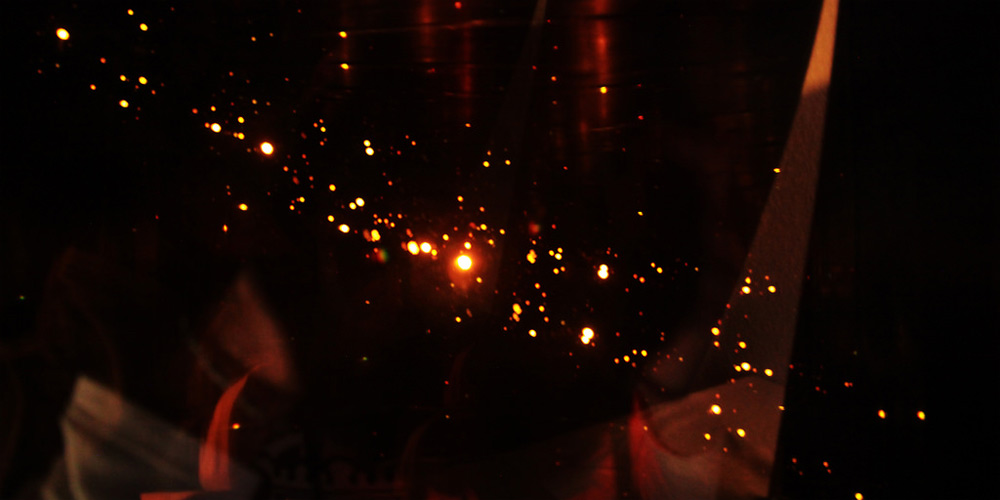
The group exhibition Media Spaces contains media projects that research innovative conceptual solutions within the realm where real and virtual spaces come together. They include artworks created with a focus on spatial aspects of media installations, including their dimension and perception, to show art works by nine young individuals who came to Berlin a year ago to study, work, and last but not least to live in the city of Berlin.
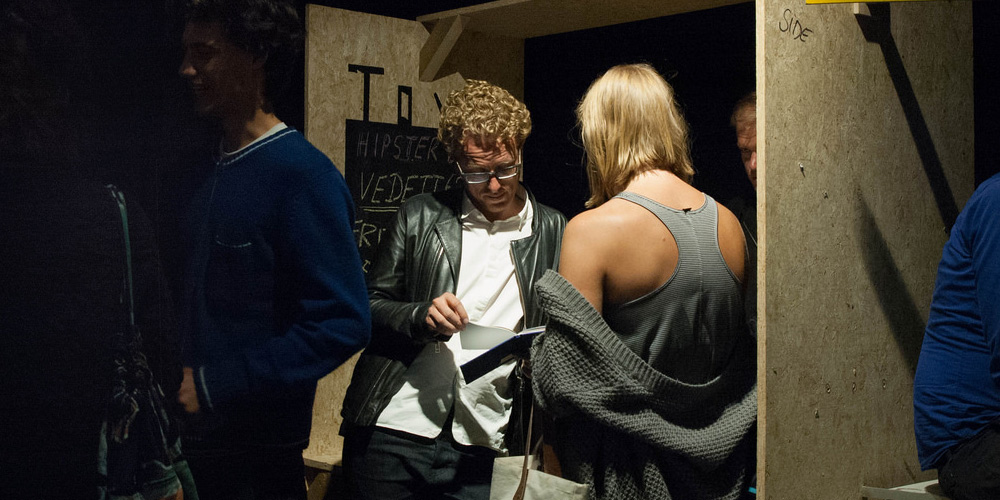
Summer Sessions are short-term residencies for young and emerging artists, organized by an international network of cultural organizations. The Summer Sessions pop-up exhibition at the Festival Ars Electronica shows a selection of outcomes realized through this international exchange of emerging talents.
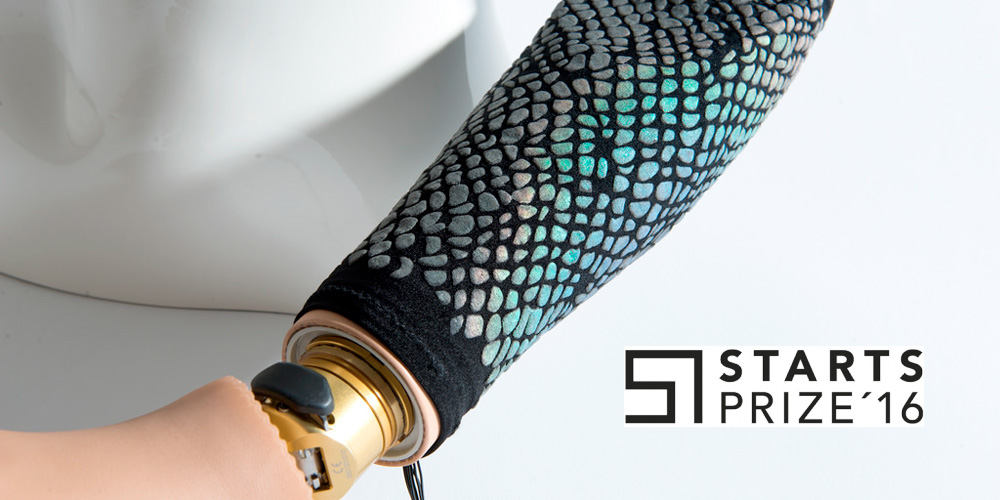
Appointed by the European Commission, Ars Electronica has launched a prize to select the most pioneering collaborations and results in the field of creativity and innovation at the nexus of science and technology with the arts. Ars Electronica 2016 presents a selection of the prizewinning and nominated works of STARTS Prize 2016.
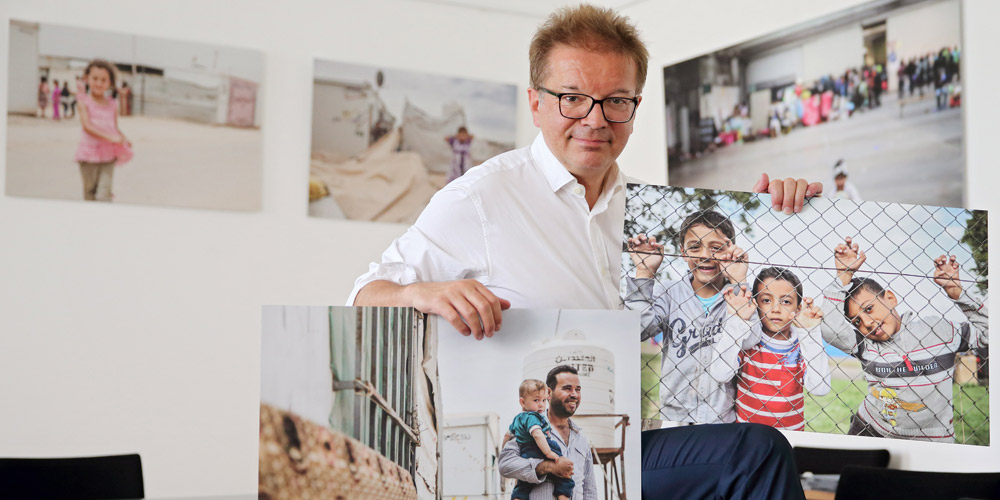
Upper Austrian photographers Werner Dedl and Volker Weihbold did a lot of traveling while the flow of refugees was at its peak—to train stations, temporary quarters and meet&greet events, and to Jordan near the epicenter of the crisis. They photographed people who had just made it through the perilous ordeal of fleeing to Europe.

Deep in catacombs of POSTCITY, there’s a labyrinth of passageways, The Maze, a fallout shelter with room for 3,000 people, and a former storeroom for undeliverable parcels. These spaces—their extrovertedness, their aesthetics—evoke animated scenes in computer games. Now, the 2016 Ars Electronica Festival is using them as a setting for an intriguingly composed show of audiovisual works in which space is an essential magnitude.
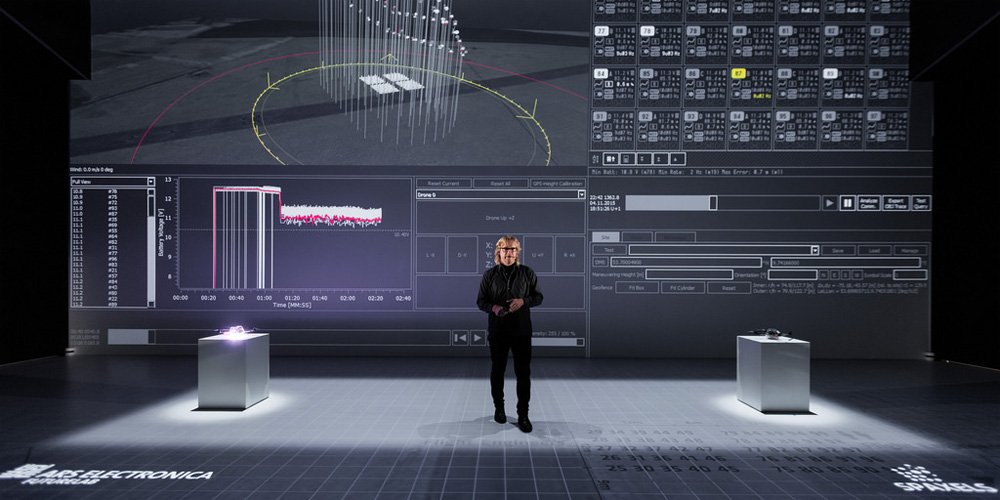
Ars Electronica and Intel present: “One rarely experiences moments in which it becomes crystal clear how important and rewarding it can be to defy all the naysayers, to steadfastly pursue a vision and to work unwaveringly for years to bring it to fruition.” That’s how Horst Hörtner, director of the Ars Electronica Futurelab, summarized what was going through his head when 100 drones took off in pursuit of a world record in November 2015. In Deep Space 8K he personally presents the DRONE 100 project.
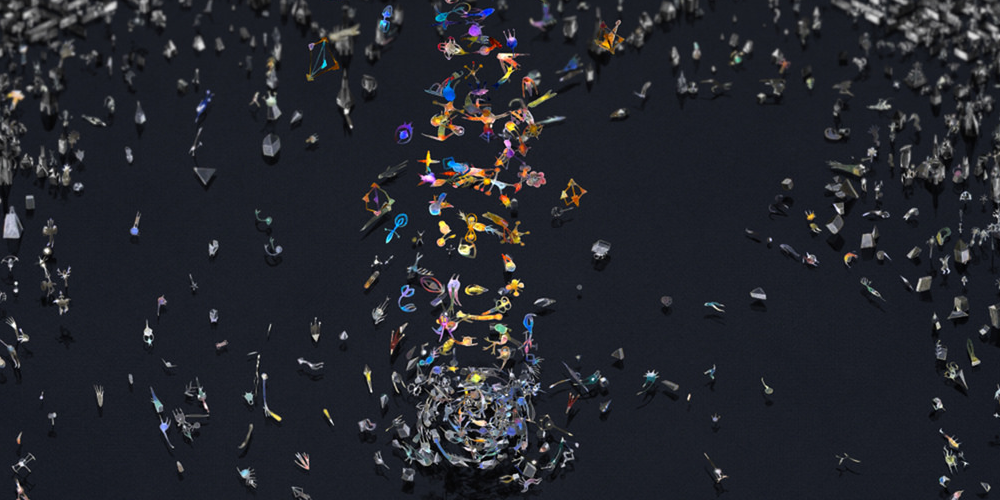
Rhizome is an experimental animated short film that has its foundation in the homonymous philosophical concept coined and developed by Gilles Deleuze and Félix Gattari, involving research that is close to Steve Reich’s serial music, Escher’s mathematical art work, Bruegel and Bosch’s paintings and various scientific theories about the development of life, genetics, the infinitely small and the infinitely large.
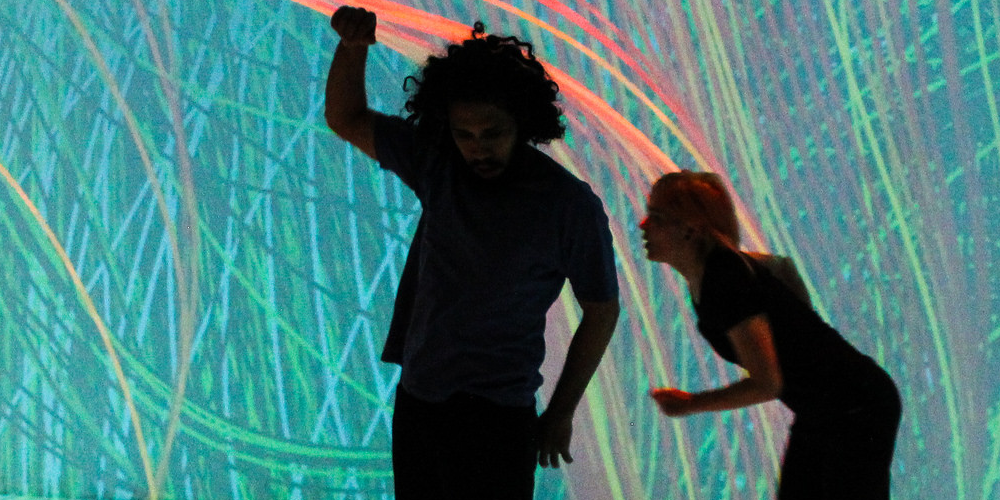
Cooperative Aesthetics is an exhibition by Gerhard Funk (AT) of a collection of programs designed to enable audiences to enjoy collective audiovisual experiences. The intention is to transform Deep Space into a setting in which visitors can move about freely and thereby influence the visual output of the wall and floor projections and the sounds audible in the space
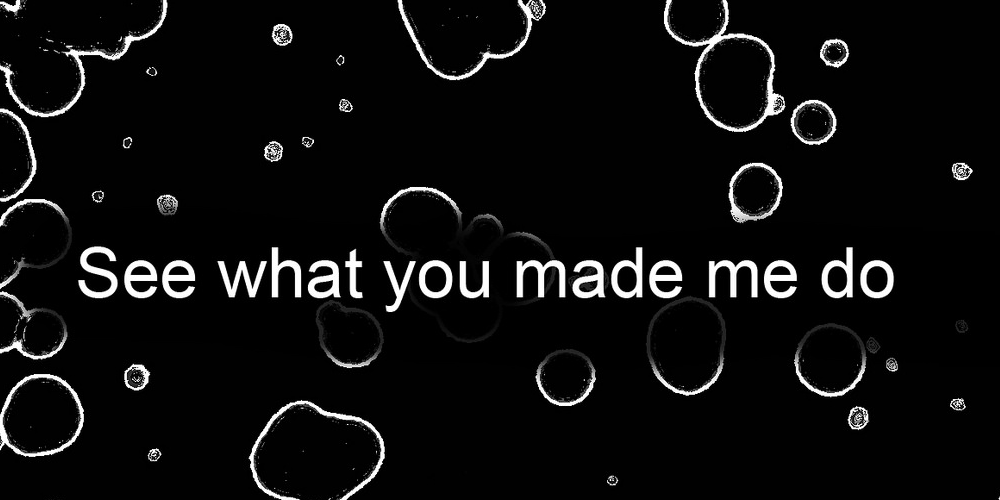
See what you made me do is a generative performance for two characters, playing and interacting according to roles and rules of power present in social intercourse. According to archetypes of behavior, our attitudes and actions are determined within a dramaturgical thread and intertwined with an immersive visual and sonic interpretation.
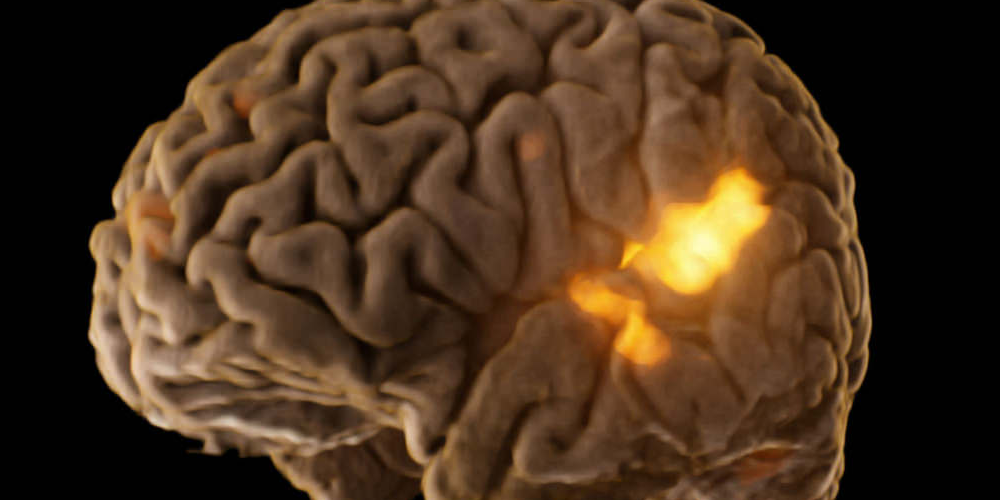
During the last three decades we have witnessed the growing complexity of technology and a flood that is filling our hospitals today—functional imaging, full gene sequencing, automated laboratory medicine and much more. But the role and responsibility sharing in healthcare, clearly structured into specific disciplines, has remained almost unchanged despite almost complete digitization.
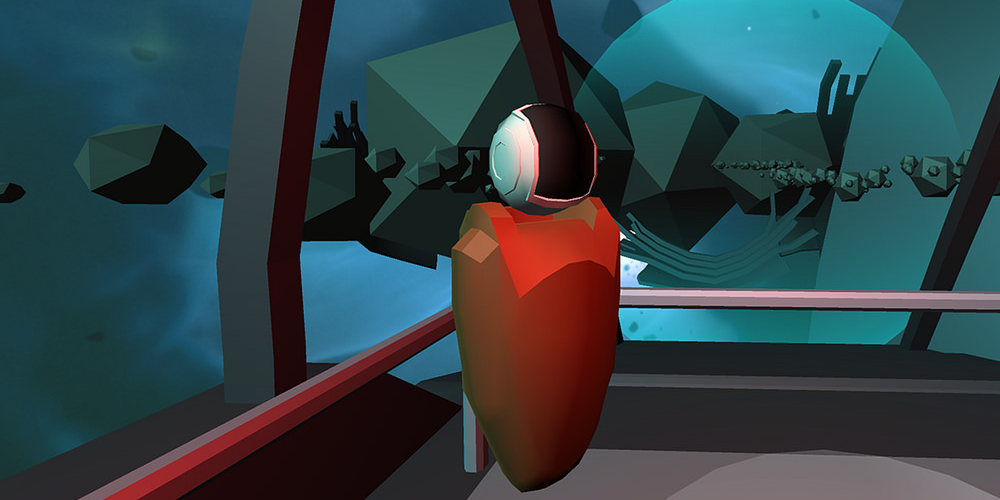
Virtual reality applications tend to focus on the experience of an individual, creating an immersive experience that practically separates the user from the real world. VR Playspace strives to achieve a collaborative hybrid VR experience by integrating multiple VR players and live spectators into a cooperative game
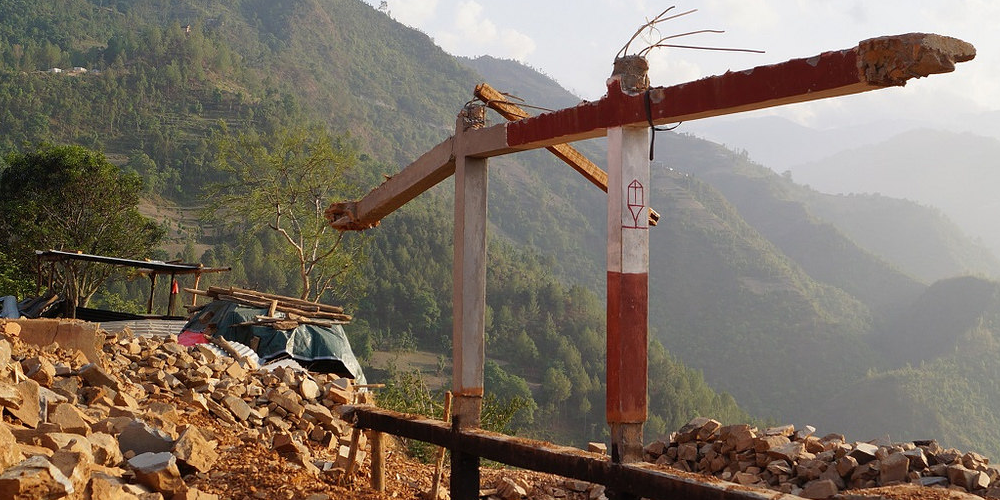
Paguro Idea initiated its first project in Nepal to support the reconstruction of villages, starting with Raghuchour in the Kavre Palanchowk district. Engineers without Borders supports the project in creating a concept to construct earthquake-resistant buildings with local materials and local resources as well as improving the water supply to secure a third crop.

The LabOratorium exhibition being staged during the festival scrutinizes the alchemists of our time and the forces that impel them to do what they do. One spontaneously associates the word alchemy with the—eternally frustrating—handiwork of transforming base metal into gold, the endless search for the Philosopher’s Stone, or even with the likes of Paulo Coelho—quirky geniuses in antique laboratories full of odd apparatuses and bubbling flasks full of spooky substances.
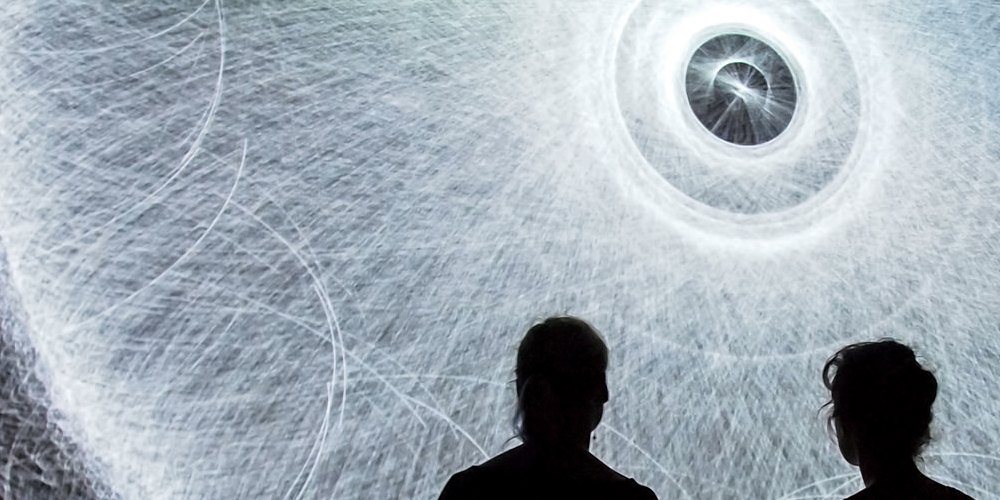
The aesthetics of man-made objects in space, their appearance and especially their orbits are transformed into a minimal audiovisual performance, showing the poetic dance satellites and their trash perform while revolving around us. Seemingly chaotic paths mutate to amazing patterns of an almost organic nature—all of it due to pure physical necessity.
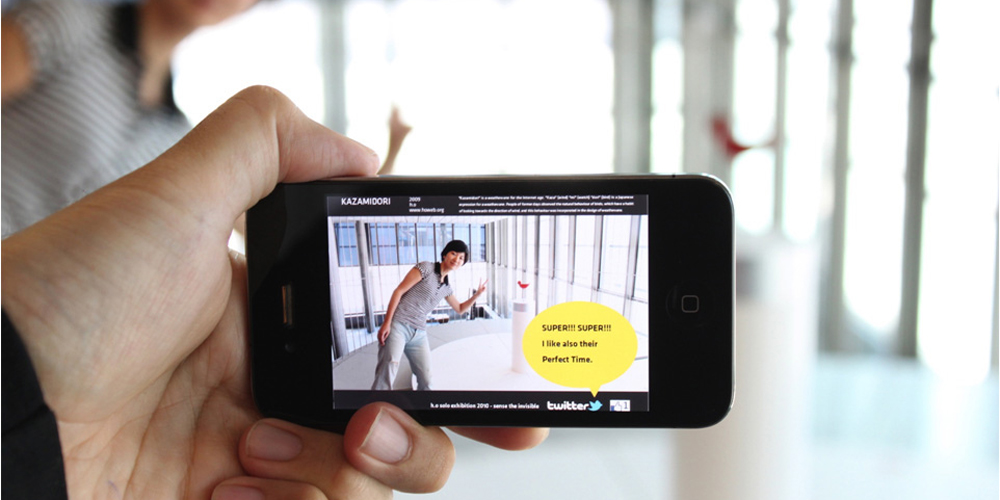
Ars Wild Card is a smartphone app developed by Ars Electronica Futurelab which enables visitors to enjoy exhibitions in public spaces. Visitors can use it to get information about works in the exhibition, as well as photographing the works, even including themselves, and creating their original postcards.
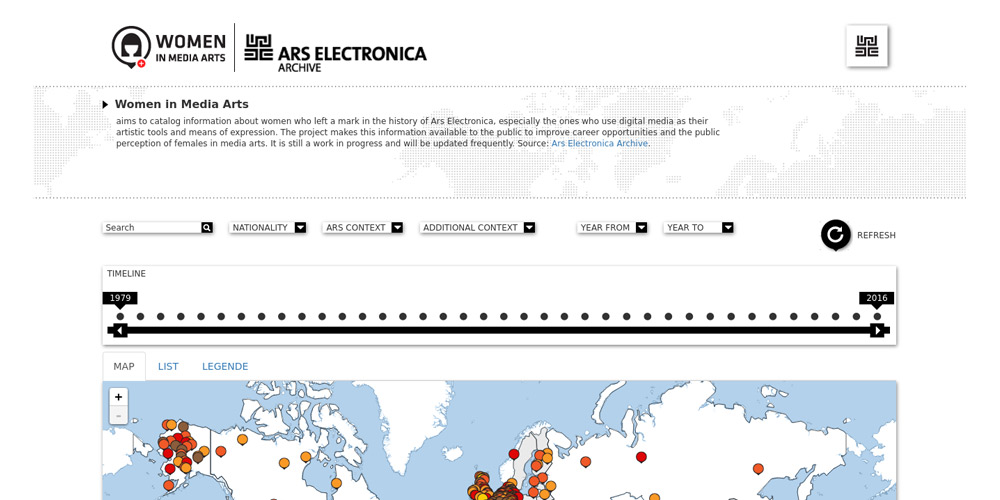
Woman in Media Arts is a comprehensive database dedicated exclusively to women working in these genres. It includes all women who have made a mark on the 36-year history of Ars Electronica, and is designed to serve as an active research platform for artists, curators, scholars, scientists and anyone else interested in finding out more about female practitioners in these fields.

Beehive art&science is an ongoing artistic research experiment and a documentation tool for the European Digital Art and Science Network to collect and contextualize video contents from artists, visitors and partners. In the broadest sense it is a cross-media system for crowdsourced video documentation.


